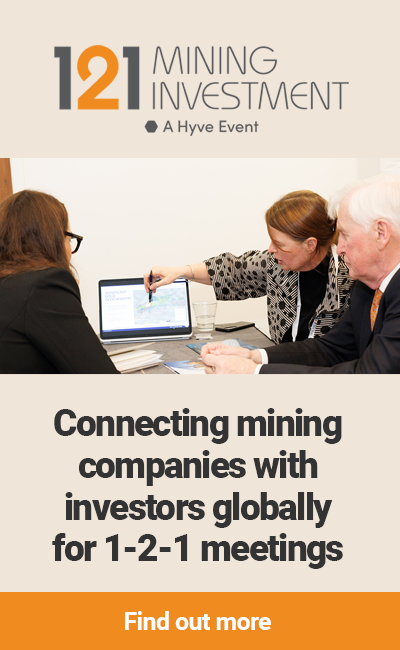There’s been a lot of unrest in Kazakhstan, which has been taking over the news. What is the impact you’re seeing on uranium and the uranium markets overall?
The impact to date on uranium prices has been surprisingly muted. Spot prices have gone from around US$42 per pound to US$45 per pound. So, let’s say it’s moved US$3 or US$4 per pound, which is less than 10%.
To put it into context, if there were guns blazing in Riyadh or Jeddah in Saudi Arabia, or if someone had invaded Kuwait again, the oil price would be over US$100 a barrel, screaming towards US$150. There would be no end of leverage on the oil equities. Saudi Arabia is 14% of the world’s oil supply.
Now, we’ve had a foreign power enter Kazakhstan and guns were blazing on the streets of Almaty. Kazakhstan accounts for 50% of the world’s current production of uranium. So, three or four times the impact of a Saudi Arabia on the oil market.
Yet, the uranium price has moved less than 10%. So it’s probably really a reflection of the fact that uranium is still followed by a relatively narrow group of investors. The fact that we have this unrest in Kazakhstan but uranium prices effectively aren’t reacting, if you will, or reverting back to where we were pre the uprising is surprising, if not shocking.
What about impacts on mine supply? Have there been significant shutdowns?
Any impact we see going forward will be relatively minor. Obviously, there’s infrastructure and the supply issues, which won’t affect production, but might affect delivery, either delivery of the yellowcake out of Kazakhstan or the delivery of supplies into the mining operations, which will, longer term, potentially impact production.
Unless there is a major uprising, the impact will not be on mine supply. The impact is on investor appreciation of the risk going forward. If you are a utility, who do you want to supply going forward? It underlines the fact that supply out of North America and Australia is certainly a lot more reliable than supply out of Kazakhstan.
Reliability may not be that they won’t deliver, but given the tensions between the U.S. and the Russian sphere, with a potential shooting war mooted to happen in Ukraine, U.S. utilities (in which 50% are currently bought from either Kazakhstan, Uzbekistan, or Russia) might expect U.S. sanctions similar to the ones currently imposed on the supply of potash out of Belarus.
So, in the current round of re-contracting, you’re going to see a lot of utilities make that move.
Current actions in Kazakhstan will reinforce that. So even though there won’t be an impact on mine supply, there will be an impact on the purchase of that supply.
Following on from that, do you see further investor interest in production coming up in North America or other markets?
Absolutely. What’s happened in Kazakhstan will continue to benefit the North American producers, both in the U.S. and Canada. You’re going to see increased demand from utilities for their production, potentially even more financing flexibility from them in terms of financing development of new, more secure North American sources of production.
I think we are going to see both increasing share prices and more interest from both retail and institutional investors in North America, as the fragility of supply of this critical input is realized.
What’s happened in Kazakhstan will continue to benefit the North American producers
Uranium has frequently been in the news as we turn away from fossil fuels. People are realizing, a little bit more, the cleaner aspects of nuclear. So, what role do you see for uranium in the future energy mix? As a lot of the talk right now is on batteries, hydrogen, and uranium, where do you see uranium fitting in?
This is unfolding just as we had expected. We made our first investment in the uranium sector in 2016, with the concept that the green aspects of nuclear energy as being a non-carbon generating source of reliable long-term, base-load energy. That’s incredibly valuable. I was reading a Bloomberg article this morning about how it’s been an unusually non-windy winter in Europe. And guess what? When the wind doesn’t blow, the turbines don’t
turn. It’s just not reliable.
At the end of the day, the one thing that nuclear is, is reliable.
The other thing it certainly is, is non-carbon generating. In this environment and the direction the world is going, that is not just necessary, it’s critical.
So, the naysayers on nuclear energy have obviously been proven wrong in the short term. What I see in the long term is actual growth in the sector. That growth has recently been dominated by Asia, in particular, China, with 150 new reactors between now and 2050 being either currently constructed or planned. That’s a huge number.
We’ve seen the European Union include in its first draft of taxonomy in January, nuclear being recognized as a green source of energy, and therefore able to be funded by the European Union with financial assistance. We will likely now see growth in the nuclear industry in all of Europe. That’s a huge game changer.
What about some countries? Germany, amongst others, is still quite opposed to nuclear.
You’re quite right. Within the European Union, there are countries that have decided to remain non-nuclear, Germany being the most vocal proponent of that. Obviously, you have France at the other end of the scale, proposing growth in their nuclear sector.
What we’re starting to hear out of the discussions currently going on in Europe is that Germany will not oppose this proposal by the greater European Union. I would not be surprised at all if Germany changed their view on nuclear energy. They’ve already started.
Earlier, when we were talking about the green transition, we were speaking a little bit about more investors getting involved in this space. Do you see more space opening for retail investors in the uranium markets?
The impact of Kazakhstan has highlighted that the investment community is still relatively small. It’s a small subset of investors in the mining sector, which is a tiny subset of the global investor universe. That is about to change, with nuclear being viewed as part of the global carbon reduction solution.
You’re going to go from a subset of a subset to strong interest from generalist investors across the globe. In particular, strong interest from a new generation of investors who are more active and climate conscious than the older generation.
To wrap things up, do you have any predictions for the long-term investment appetite? Where do you see the market heading?
With these global trends, it’s very easy to see uranium prices double from where they are now in five years. The fact of the matter is that demand is growing and will continue to grow. Yet, the mine deficit continues to grow along with it. There are simply no new mines under construction, even though the price has gone from US$20 per pound to US$50 per pound.
Uranium mining is highly regulated, and new mines require long lead times to be permitted and constructed. So when prices get to US$100 per pound and the financial incentive exists to bring on a new mine, it will still take ten years to bring that new mine into production. The regulated nature of the industry dictates that high prices can last for a long time because it takes years for a supply response to high prices.
So, the upside is there. Increased uranium prices coupled with greater investor awareness, combined with a bias of capital to move away from Kazakh supply towards North American supply, is building to a perfect storm, with respect to equity prices for North American uranium developers.












